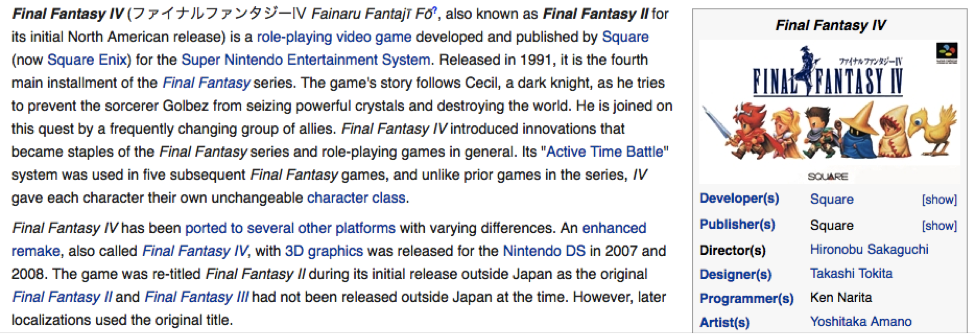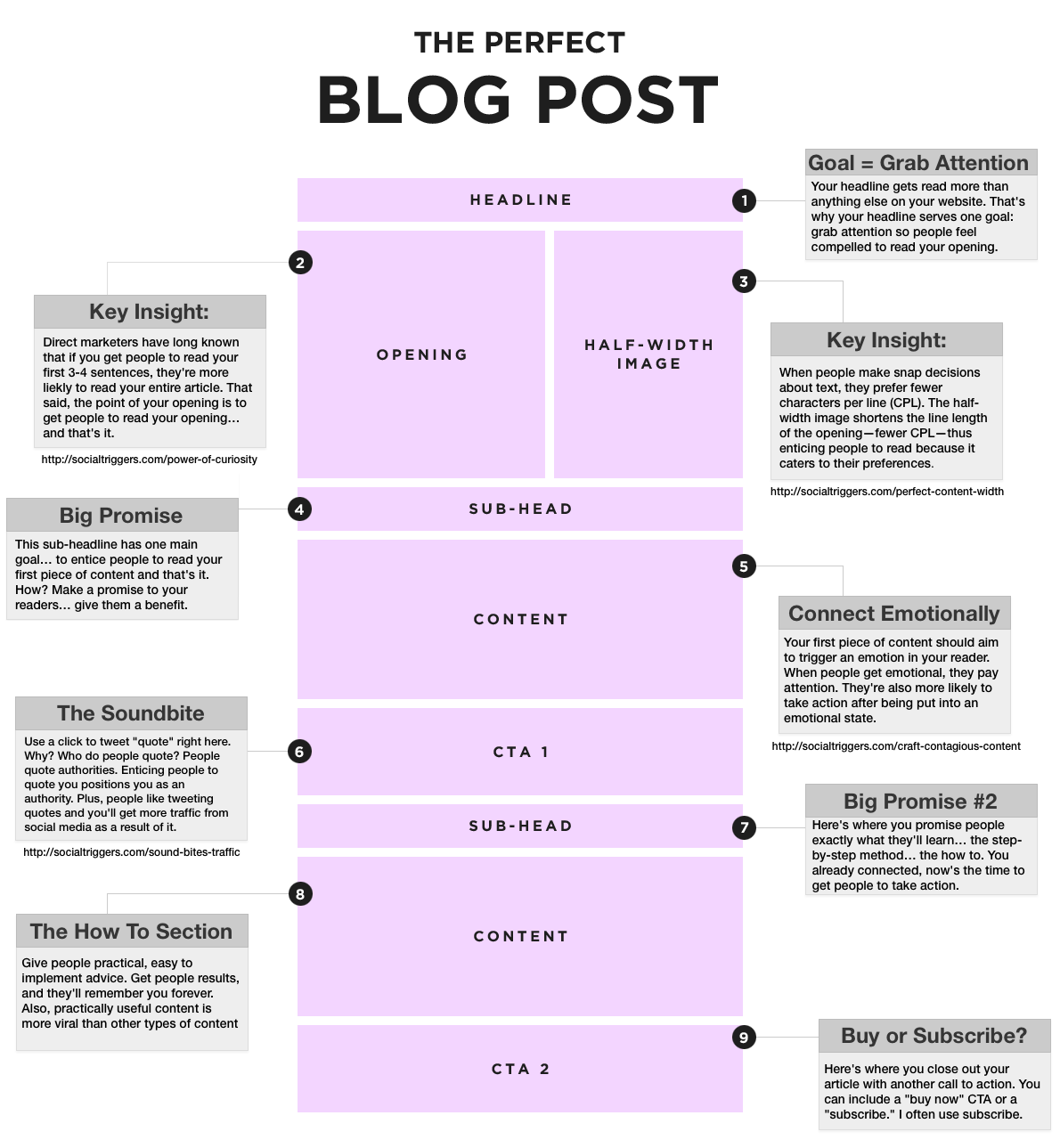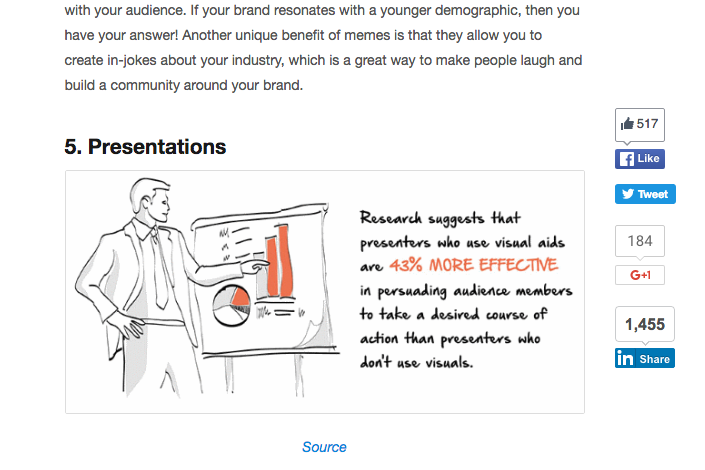This is a guest contribution from Benjamin Brandall.
Unless you’re writing instructions or technical copy, writing is a creative process. When writers are in the flow, they work in bursts of energy, hammering out paragraphs without stopping to think about editing.
Unedited writing is, in the words of Annie Lamott: shitty. And so it should be. If you’re stopping every three words to check what you’re doing, you’re going to take days to write a disjointed, awkward piece. That’s where using an editing checklist comes in.
Editing is a misunderstood practice
A common misconception is that editing is looking at the spelling and grammar. Maybe in the days before word processors, that’s what it was, but now we have Grammarly, Google Docs and a wide range of tools to help us fix common errors in seconds.
What’s important for the post-Grammarly editor is style, fact-checking and readability. Some of these elements are technical, and you can reduce them to a formula, but as I’ve learned since being the gateway everything on the Process Street blog goes through before publication, you can’t ‘teach’ style.
In this article, I want to share with you an internal process I’ve developed for editing articles and hope that it helps you, too. It includes:
- Copy editing
- Editing for SEO
- Optimizing your visuals
Part 1: Copy editing
Since this part is going to take the most amount of time, it’s best to get it out of the way right now.
Before focusing on the finer details (SEO and visuals), make sure that the words are correct. Let’s get into it.
Analyze the article’s structure
We know this one from school.
An article should have an intro, where it gets the reader’s attention, conveys the value of what they’re about to say and sets expectations.
Then, it should go on to make a series of structured points, all living up to the promises of the title and intro.
To wrap things up, you need a conclusion to summarize your points, call the reader to action and leave them with something to think about.
(Source: Lotem Design)
While reading the article, think about whether the article follows a logical sequence, all the way through.
For more information about article structure, check this out (which, of course, has a great structure).
Check spelling and grammar with Grammarly
As I was saying, editing isn’t only spelling and grammar, but it is part of it. It’s the bare minimum, and will catch the most obvious mistakes in the eyes of the reader.
Check you’ve corrected all the words and phrases flagged by Grammarly.
Grammarly isn’t perfect, but it’s the best tool around. It’ll catch incorrect comma placement, confused words and all spelling errors, but it doesn’t compensate for that alchemical ingredient — style.
After reading through the article once with Grammarly and making corrections, move onto fact checking.
Check for inconsistencies without Grammarly
Grammarly can’t flag everything up. As pointed out by Ian Luke on ProBlogger, some terms like ebook / e-book / eBook are a matter of taste, not concrete.
Grammarly or another spell-checking tool could miss that, so you have to turn it off sometimes and let your brain do the work.
Fact-check the article
This step is far more important for news pieces than personal blog posts, but you do always need to make sure you’re backing your facts up. A good method of catching opinion presented as fact is by asking yourself “how do you know this?” for every statement you read.
Check all numbers, facts, quotes and percentages have a source link.
A good way to find a citation for unsourced statements is with Google Docs’ research toolbar. It brings up a mini-version of Google search in the right-hand pane and you can search keywords to find a source to back the claim up. Ideally, however, your claims will come from sources in the first place.
Remove filler words (especially adverbs)
There are, there is, however, regardless, perhaps, possibly, rather, a bit, well.
Filler words make it sound like we’re nervous about what we’re writing, and adverbs don’t often add anything to the sentence.
Here’s a list of the scoundrels: 297 Flabby Words and Phrases That Rob Your Writing of All Its Power.
It’s not reasonable to expect you to check for all 297, but check that list of filler words while editing to get a feel for the words to cut.
Convert from the passive to active voice
The passive voice is unclear. It either clouds the facts of what you’re talking about or sounds long-winded.
According to The Daily Post, you can recognize passive sentences by looking for these things:
- A form of the verb “to be”
- A past participle (usually the -ed form of a verb)
- Optionally the word “by” followed by a noun
Passive: The window was broken.
Active: Ben broke the window.
Passive: The ice hockey match was hosted by Russia this year.
Active: Russia hosted the ice hockey match this year.
Seek and destroy passive sentences.
Cut out the cliches
If you condense Orwell’s fantastic essay “Politics and the English Language” down to just a few points, a major one would be:
What do I mean by cliches? I don’t think I could do a better job than this huge list of 681, to be honest. So, let me give you a few examples and leave it at that.
- avoid like the plague
- take the bull by the horns
- on a roll
- wake-up call
- pull your punches
When you read a cliche, your brain shuts off and doesn’t cognate the meaning because it’s seen the phrase so many times. You don’t want your readers to switch off, do you?
Weed out weak verbs and adjectives
One strong word can replace 3 weak ones with ease. Instead of padding writing with adverbs, adjectives, and extra fluff, use strong words to convey meaning.
Example:
- Think up a plan —> Devise a plan
- Go and see the world —> Travel the world
- Not very good —> Atrocious
- A bit of a pain —> Excruciating
- Quite interesting actually —> Fascinating
A good way to CTRL+F for these is to search for ‘very’, ‘quite’, and other useless modifiers.
Don’t stress over commas, but be consistent
I know, I said already to use Grammarly early on to catch grammar mistakes, but one debatable rule concerns commas.
Since we’re writing to be read, not to pass an English exam, ensure the writer uses commas to help the text flow. The AP Stylebook advises against it, whereas Oxford University demands it, so pick your side.
As long as you’re consistent in your usage, it doesn’t matter. A writer’s aim is to put their thoughts into words. If you’re going mad working out whether to adopt the Oxford comma, ask yourself the question: “Will it help the reader understand my point?”. There are many cases where it does.
To use Grammarly’s example:
- “I love my parents, Lady Gaga and Humpty Dumpty”
- “I love my parents, Lady Gaga, and Humpty Dumpty”
Which is less confusing?
Type like you talk
Convert your cognitions into words befitting of the common vernacular. Write using everyday language. If you’re trying to think of more intellectual-sounding synonyms, don’t bother. You don’t become an authority by alienating your audience. Type like you talk.
For a solid guide on this topic, read William Zinsser’s On Writing Well.
Self-editing? Leave the article for at least a day
Writing is a draining process. If you’re anything like me, you’ll not have the energy to edit after the wide-eyed coffee-fueled writing process.
You’ll also be too attached to the piece to be objective. After a day, when you re-read the article, you’ll find parts of it that you hate, and it’ll be obvious passages need rewriting.
“The professional writer says, ‘It is almost certain that most of what I write will not resonate with most people who read it, but over time, I will gain an audience who trusts me to, at the very least, be interesting.’” — Seth Godin
Part 2: Editing for SEO
Writing with SEO as a key concern is the simplest way to… write slow, awkward articles. Others might disagree, but I find that on-page SEO is much easier to edit in than to keep as a consideration all the way through. Maybe you’re writing an article with a keyword already in mind? That should be more than enough preparation because the whole article is what you’re targeting.
After the copy editing, it’s time to add in on-page optimization for search. Backlinko recently updated its mega-guide to on-page SEO with an amazing infographic, so let me break that down into action steps for editors.
Put the keyword at the start of your H1 title
Search engines put more weight on the keyword in line with how early on in the title it occurs. While it’s not an exact science, it’s best to put the keyword in the first half of your title.
For example, instead of ’10 Checklists for to Help Your Startup With Employee Onboarding‘ edit this to ’10 Employee Onboarding Checklists for Startups’.
Additionally, your title should be in H1. This is very likely a default if you use WordPress, but check and make sure in the HTML of your article in preview mode to see that the title is wrapped in <h1> tags.

In Chrome, right-click on a page and go to Inspect Element. You should be able to hover over the article title and see which H tag it’s wrapped in.
Make sure the slug is only your target keyword
Instead of your slug (everything after your domain.com in the article URL) looking like this:
example.com/blog/catgories/editing/checklists/2016/01/editing-checklist-for-content-marketers-and-their-mothers
Set it to be just this:
example.com/editing-checklist
Not only does it look better and is easier to remember, search engines prefer it.
Include images, videos, infographic, embeds
As well as not boring your reader to tears, multimedia increases time spent on the page, which signals to Google that the post was interesting enough for the user to stick around. A 2-minute video could increase the time on page by that time, for example.
Plus, media breaks up the text and makes the post scannable. A reader scrolling further down the page is another signal to Google of quality content.
What’s better?
Straighten up your subheading hierarchy
With your title tag in H1, you need to make sure that your subheads are in H2 and any sub-subheadings in H3.
As a general rule, you can never use an H2 without an H1, never an H3 without an H2, and so on.
This should come naturally if you structured the article properly in the first place.
Use your exact keyword 2-3 times in the body
Your keyword should appear in the body 2-3 times. It’s important that one of these occurrences is within the first 150 words of the article. This will also force you to cut the intro down and get to the point, which never hurts!
To check this, CTRL + F your keyword.
Use 2-4 outbound links every 1,000 words
It’s well known that outbound links (to sources or further reading) increase the authority of the article because Google knows it’s well sourced. A new guideline from Brian Dean gets more specific. Brain recommends you use 2-4 outbound links in every 1,000 words you write.
If you’re writing a well-sourced piece of work, you shouldn’t have to work hard for this.
Internally link (like Wikipedia)
Golden Age SEO Joke: How do you get 10 backlinks in one post? Internal linking, my good mate!
Believe it or not, even Wikipedia has an SEO strategy, and internal linking is a big part of it. Why? Because link juice flows through your pages according to where they link to. So, if you get backlinks to a page with plenty of internal links, the authority passes to the pages you linked internally.

Internally linking both the keywords of the target pages, plus leading phrases like ‘ported to several other platforms’ (begs the question ‘which other platforms?’), helps both SEO and reader engagement on your site overall.
Part 3: Optimizing Your Visuals
Visuals increase people’s willingness to read your content by 80%. Garbage visuals, however, do you no favors.
Get rid of any pictures that look like this:

Which brings me to my first point.
Please… Get rid of those stock images
At Process Street, we have a general rule that helps our blog posts not look godawful.
All images should either be custom graphics or screenshots. Just take a look at this collection HubSpot put together of 13 hilarious stock images. Want your blog post to look like a non-parody version of that?
As Kathryn Aragon says, images should not be:
- Inserted willy-nilly, just to have an image.
- Trite or overused stock photos.
- Thought of only as share-bait.
- Boring or irrelevant.
The point is, stock images are shoved in for the sake of it. What could a clinically smiling guy with a briefcase be illustrating to the reader? (Apart from ‘the person who wrote this hates good things’.)
Make sure your media fits full-width
There’s something visually pleasing about aligning your text with your media by keeping both the same width.
Depending on the column width of your blog, make sure your image will fit. For a visual reference, the column width of Process Street is 800 pixels.
You want your images to look like this:
Not this:
(sorry, quaint farming blog :( )
Use a wide range of visuals
This might seem like I’m assuming you all have no attention span, but seriously, a variety of visual stimuli is better for reader engagement. Try to balance between:
- Gifs
- Videos
- Infographics
- Screenshots
- Other embeds (like checklists, hint hint)
- Custom graphics (we use a range of templates and custom SVGs)
With a range of media, you’re more likely to keep readers on the page. If you’ve got relevant podcast episodes or audio of some sort, these are also great to embed using a service like Soundcloud.
Optimize your titles and alt text
It’s important to optimize your image titles and alt text for a couple of reasons. Firstly, it aids your on-page efforts as I talked about earlier. If you have supporting alt text in line with your keyword choices, then it boosts the optimization of your page.
Secondly, you get the chance to rank your images in Google Images. People don’t often talk about image backlinks being important, but Process Street consistently gets a few solid links per month thanks to custom image attribution. If those images weren’t properly optimized with alt text and titles, the linker wouldn’t have known they exist.
Keep custom graphics consistent
At Process Street, we have a selection of backgrounds and SVGs, used in conjunction with 3 main colors and 1 font.
That keeps our images consistent, but not uniform enough to be boring. This step stems from the need for having a solid visual style guide for your brand and blog.
For more information about the power of visual content and how to create it, check out this infographic from Digital Information World.
If you don’t have brand guidelines to refer to, you can create some. They don’t have to be fancy 30-page PDF documents like this one (screenshot below) but use those for inspiration.
Here’s a simple image I use to share with writers making custom images for our blog. It shows the hex codes of the 3 main Process Street colors, and the font used is Cabin.
Having resources like that for writers to refer to will save plenty of time in the editing process on your end.
You can’t edit a bad post into a quality post
After all this, there’s something to be wary of — you can’t edit a bad post and turn it into a top-notch post. Editors traditionally start as writers because editing is harder. It takes a keen eye, great taste, and strong analytical skills. If you’re an editor working alongside a junior writer, the best course of action while running this checklist is to add comments (either in Google Docs or screenshots with annotations) to help the writer improve.
Editing in silence doesn’t help the writer get better.
Get this post as an interactive editing checklist
Click here to get this guide as a checklist you can run through for every post you edit. It’s handy for teaching new writers, and also training yourself to be a tougher editor.
Bear one thing in mind…
Did you find this post useful? Do you have anything to add? Let me know in the comments, and we can have a chat. :)
Benjamin Brandall is the head of content marketing at Process Street. When he’s not at work, he runs obscure entertainment blog Secret Cave. Find him on Twitter here.
The post The Ultimate Editing Checklist for Content Marketers appeared first on ProBlogger.
from ProBlogger
http://feeds.feedblitz.com/~/219564976/0/problogger/












No comments:
Post a Comment